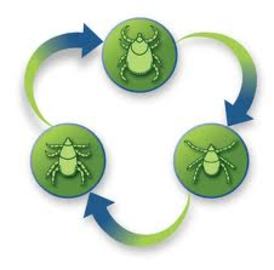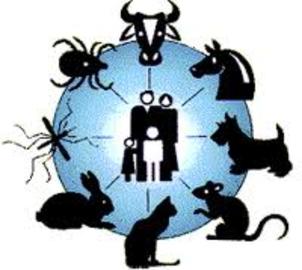Introduction

Zoonotic diseases or zoonosis are infectious diseases that are transferred from humans to animals and vice versa. The former is known as reverse zoonosis. Zoonosis is caused by bacteria, parasites, fungi and viruses. According to a study, it was shown that amongst 1,415 pathogens that affect humans, 61% were zoonotic diseases.
History

Nowadays zoonotic diseases have become a major area of interest because these infections were previously unknown or they increased due to lack of immunity amongst people. The zoonotic disease named the West Nile Virus emerged in the US during 1999 and caused much distress during the summers of 2002. Some examples of other zoonotic diseases that appeared in history include the bubonic plague, salmonella and Lyme disease. The reason for the increase in zoonotic diseases is the interaction between humans and animals. An example of this can be the outburst of the Nipah virus that spread in Malaysia as the pig farming started to intrude into the natural habitat of bats that carried the Nipah virus. West Nile virus and avian influenza has also increased amongst humans because of the increased contact between the carriers of the disease, which are animals and humans or vice versa. Animals that are known to carry zoonotic diseases are generally birds and bats. However, malaria, elephantiasis and such diseases are not considered to be zoonotic because they are transmitted through insects and not animals and the bacteria and viruses are dependent on humans throughout their lifecycles.
Features

The following agents are listed as zoonotic diseases: bacteria, parasites, viruses and fungi.
The first on the list is bacteria because millions of people fall ill from bacteria. It is the major cause of foodborne zoonosis. Foodborne zoonosis includess salmonellosis and campylobacteriosis and they casue illnesses such as fever, diarrhea, abdominal pain, malaise and nausea. Other bacterial zoonosis diseases include anthrax, brucellosis and tularaemia.
Parasites are another type of zoonosis. Cysticerosis are caused by parasites that are found in swine. The parasites cause seizures and headaches in humans. Other such zoonoses are trematodosis, toxoplasmosis and trichinellosis.
Viruses are another type of zoonotic disease. Viruses such as rabies found in carnivores and bats can be transmitted into humans by bites. People infected by rabies can die if they are not treated and statistics show that each year 55,000 people, amongst which children are in majority, die from rabies. Dogs are mostly responsible for the human deaths. Other zoonotic viruses are avian influenza, Crimean-cono hemorrhagic fever, ebola and rift valley fever.
Fungi is another form of zoonosis. Dermatophytoses is one type of zoonotic fungus. This fungus is a superficial mycoses that may be transmitted from animals to humans and can affect the skin, hair and nails of humans. The fungus causes increased itching and redness of the skin, scaling of the skin and hair loss.
Tips and comments
It can be understood from the above stated facts that zoonotic diseases are serious and can even cause death, therefore, one should take precautions. The best precautions that can be taken include maintaining a good hygiene level. Wash your hands after handling animals or meats, after using toilets and before eating or preparing food. Apart from this, always clean up dog and cat feces that is found in or around the home and always prevent children from getting into contact with animal waste . Always buy meat from a reputable dealer. Boil unpasteurized milk, refrigerate perishable foods and always wash vegetables and fruits before consuming them. By following these simple steps, you can prevent zoonotic diseases to a great extent.
Comments
Most Recent Articles
-
How To Recognize a Zoonotic Disease
We must remember that zoonotic diseases are some of the most deadly and widespread diseases, especially in places like livestock firms, where there are plenty of animals, and ample chance of...